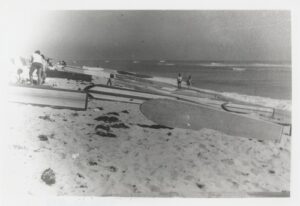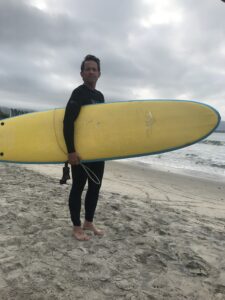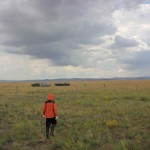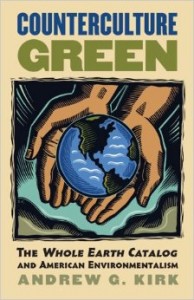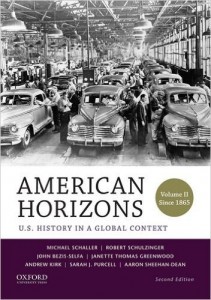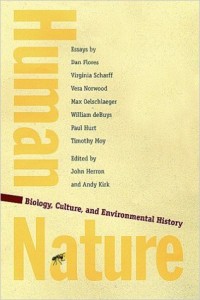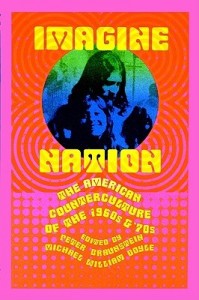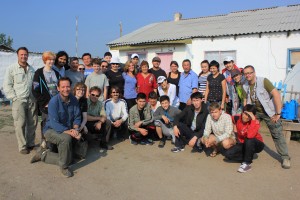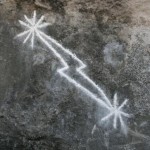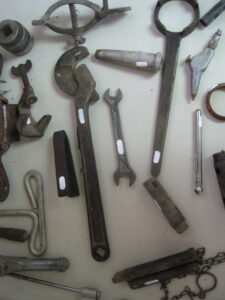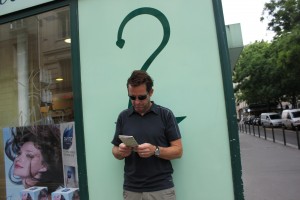I’m a Professor of environmental, western and public history at the University of Nevada Las Vegas and Director of the Reid Public History Institute(RPH). The Reid Institute was founded with the support and in honor of the late U.S. Senator Harry Reid. Senator Reid had a deep respect and understanding of the importance of history in the Intermountain West and authored a history of his unique hometown, Searchlight: The Camp That Didn’t Fail (2007). The Senator was a tireless supporter of critical historic preservation projects in Nevada and the American West with a special interest in the relationship between history and environment on the public lands. I had the privilege to work with the Senator and his staff for twenty years to research and preserve sites like the Walking Box Ranch, the Mojave Road in the Mojave National Preserve, and a range of cultural landscapes that capture historic relationships between people and place in the Mojave Desert. The institute is dedicated to continuing this work using insights from environmental history, historic preservation and public history in support of innovative southwestern history research initiatives.
Surfers at San Onofre, 1939. San Onofre Site Visit, 2023. Florianopolis, 2019
One of those current initiatives is the California Surf Multiple Property Document (MPD). The Surf MPD is a collaborative partnership between the Reid Public History Institute, the National Park Service Community Partners Program and Sea of Clouds, a nonprofit environment/historic preservation organization that placed the Malibu Surf Break on the National Register of Historic Places. The Surf MPD will provide a contextual framework for ongoing and future efforts to preserve sites and cultural landscapes associated with the history of surfing in California. This project will contribute to ongoing efforts to use historic preservation mechanisms to preserve sensitive environmental sites impacted by climate change. Historic surfing sites are especially vulnerable to climate change and preserving the history of these cultural landscapes while still representative of their period of significance is urgent. When complete, three historic surf breaks will be added to the National Register. This work builds on series of Yosemite projects that began with the efforts of the rock climbing community to preserve the historic climbers Camp 4 profiled below. It has been an honor to work with Sea of Clouds and their team of pioneering researchers who created the model for this type of historic preservation research.
My own research and teaching focus on the intersections of cultural and environmental history in the modern U.S. with a special interest in the American West, countercultures and public history. In public history I specialize in collaborative multidisciplinary research partnerships linking historic preservation and environmental history and oral history and transnational history. Our work in the public history program in these areas resulted in award-winning Oral history projects, museum exhibits, documentaries, 24 National Register Nominations, National Landmark designations, Cultural Resource Studies, Multiple Property Documents for Yosemite National Park, Historic Resources Studies and Administrative Histories across the West. In 2012, I was appointed by Governor Brian Sandoval to the Nevada 150th Commission. As a member of the Commission I had the pleasure of taking some of my public history research and teaching out to the state where I was tasked, among other things, with helping make the Nevada Sesquicentennial a meaningful educational event for students from K-12 through Ph.D. It was an honor and a lot of fun. Some of my research methods in public/environmental history are explained in, “When Nature Becomes Culture: The National Register and Yosemite’s Camp 4” with Charles Palmer, Western Historical Quarterly 37:4 (Winter 2006):496-506.
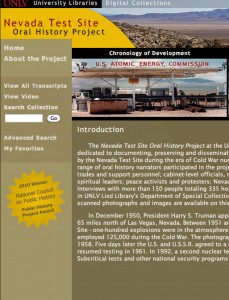
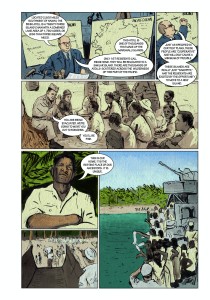
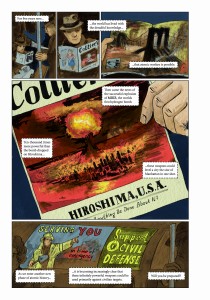
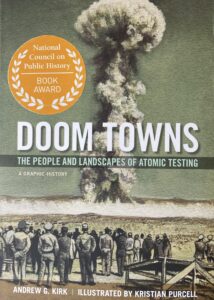
Research & Scholarship
From 2003-2010 I was a Co-Principal Investigator with sociologist Robert Futrell on the award-winning Nevada Test Site Oral history Project Directed by Mary Palevsky and funded by the U.S. DOE and U.S. ED. My resulting research, exploring the environmental/public histories of atomic landscapes and the lived history of nuclear testing, was published in, “Rereading the Nature of Atomic Doom Towns,” Environmental History 17:3 (July, 2012) and more recently as a graphic history, Doom Towns: The People and Landscapes of Atomic Testing (Oxford University Press, 2017). Doom Towns was completed in collaboration with amazing UK artist Kristian Purcell. The book won the 2018 National Council for Public History Book Award.
From 2012-2014, I served as the lead researcher on a U.S. State Department Funded exchange of students and researchers studying the relationships and first-hand experiences of those who lived and worked on the U.S. and former U.S.S.R. nuclear test sites. The State Department Grant linked the National Atomic Testing Museum with its Kazakh counterpart, the Karaganda Ecomuseum located outside the vast Soviet Polygon nuclear testing zone. This program resulted in a remarkable exchange of scholars and students from both regions. More recently I was appointed as a Scholar on the Department of Energy and Department of the Interior Manhattan Project Roundtable for the Manhattan Project National Historical Park.
Since 1997, I’ve researched and written about the influential community of people and organizations that coalesced around the Whole Earth Catalogs first published in 1968 by Stewart Brand and a remarkably talented crew of collaborators. I was struck early in this research with the ways this quintessential countercultural product reflected the ideas, innovations and political views now lumped under the umbrella of “sustainability.” This is especially true in the areas of alternative energy, appropriate technology and shelter the catalogs celebrated and explained fifty years ago in gloriously illustrated detail long before these ideas moved into the mainstream of political discourse and debate about the environment. Whole Earth in print and in the community it fostered also represented a distinctly different type of environmental politics that defied easy Left/Right assumptions. There was a pragmatic and distinctly western libertarian sensibility and enthusiasm for technology and capitalism running through this counterculture classic that made it distinctly different from the politics of the New Left or the hedonism of the Hippies. I explored this pragmatic aspect of 1960s-70s environmentalism first in,“Appropriating Technology: Alternative Technology, The Whole Earth Catalog and Counterculture Environmental Politics.” Environmental History 7:4, (July 2001). Then in, “Machines of Loving Grace,” in Peter Braunstein and Michael William Doyle’s, Imagine Nation: The American Counterculture of the 1960s & 70s (Routledge, 2002) and in much more depth in, Counterculture Green: The Whole Earth Catalog and American Environmentalism (Kansas, 2007) and more recently, “Alloyed: Countercultural Bricoleurs and the Design Science Revival,” in, David Kaiser and W. Patrick McCray, eds., Groovy Science: Knowledge, Innovation & American Counterculture (University of Chicago Press, 2016). For a recent review of a wonderful new Whole Earth Field Guide see, The Sixties: A Journal of History, Politics and Culture. I’m also the Co-Editor, with University of Oklahoma historian David Wrobel and Saint Louis University historian, Flannery Burke, of the Modern American West Series for the University of Arizona press and serve on several national academic organization boards in my various fields.
Public History & Field Work
As the founding Director of UNLV’s Public History Program for seventeen years I had the opportunity to work across the American West and around the world on some amazing collaborative applied history projects with students, agencies and community partners. Because of my research interests in environmental history the intersections of natural and cultural resources was a consistent theme. Our historic preservation programs emphasize the relationship between natural and built environments with a regional focus on the vast public lands of Nevada, Utah and the Eastern Sierra’s of California.
A ten-year series of projects in Yosemite National Park enabled faculty and thirty graduate students from several disciplines to collaborate with NPS officials and researchers. This relationship started in 2005, when I was one of two scholars advising the NPS on the controversial National Register Nomination of the world renown rock climbers campground Camp 4 (the rock climbers campground) UNLV became a partner in a major effort to inventory, revise and expand the National Register Listings in the park. The ultimately successful listing of Camp 4 by NPS Historian David Louter captured many of the themes and goals of our program.
Advising on Camp 4 led to an opportunity to research a new Multiple Property Document to aid in the preservation of Yosemite’s 600 plus historic resources and cultural landscapes. The YOSE MPD included 20 new individual National Register Nominations of a wide range of critical historical resources and landscapes and a new framework to aid researchers, NPS officials and preservationists in future efforts to preserve the history of the nation’s first national park. I especially enjoyed working on the nominations for the High Sierra Camps scattered across Tuolumne Meadows and High Peaks areas of the park. Other similar projects included extensive work in the Mojave National Preserve where we placed the Goffs Schoolhouse and Mojave Road on the National Register.
 The Mojave Desert is an amazing place with extremes of temperature and landscape ranging from frozen high alpine islands like Mt. Charleston towering above Las Vegas (19th most prominent summit in the U.S.) to vast rain shadow desert basins. Nevada has the highest concentration of public lands in the lower 48 with over 70 Million acres. Las Vegas is an island in this ocean of natural and cultural resources and a perfect laboratory for public history. I’ve enjoyed exploring this landscape with my students, research collaborators and federal land agency partners.
The Mojave Desert is an amazing place with extremes of temperature and landscape ranging from frozen high alpine islands like Mt. Charleston towering above Las Vegas (19th most prominent summit in the U.S.) to vast rain shadow desert basins. Nevada has the highest concentration of public lands in the lower 48 with over 70 Million acres. Las Vegas is an island in this ocean of natural and cultural resources and a perfect laboratory for public history. I’ve enjoyed exploring this landscape with my students, research collaborators and federal land agency partners.
Currently I’m collaborating with my colleague Deirdre Clemente, our graduate students and the BLM on the interpretation of the amazing Walking Box Ranch. Built by silent movie star Clara Bow and her husband Rex Bell, the ranch captures the convergence of nature and culture in the Mojave desert and is a remarkable story of preservation of environment and historic buildings, structures, and objects.
In 2018, I received the Harry Reid Silver State Research Award for, “research endeavors that directly and positively effect the economic growth and development of the State of Nevada,” for my public and applied history efforts.
For more on the UNLV Public History program see, “What Happens in Vegas: Historic Preservation and Sustainable Public History in Sin City,” The Public Historian 36:3 (August 2014).
Media & Impact
My research and public history activities have been featured in; New York Times (Sunday Featured Book Review, (12/9/2007), NYT Science Times (2/27/07 D1) & NYT (3/22/07, D1), PBS NewsHour, The Los Angeles Times, San Francisco Chronicle, Grey Room, Preservation Magazine, Public History News, Docomomo-US, Preservation Forum, The Discovery Channel—How Stuff Works, The Travel Channel, Orion Magazine, PBS American Experience, World Changing, Wired, Boing-Boing, Design Issues, The Chicago Tribune, The Museum of Modern Art, “Access to Tools Exhibit,” “West of Center” Exhibit Museum of Contemporary Art Denver, The Atlantic, Newsweek, London Review of Books, Washington Post, Ready Made, Plenty, Bloomsbury Review (Editors’ Favorite Books of 2008), History Network News, Reason Magazine, Enlightenment Next, Edutopia, Voice of America, & NPR.

